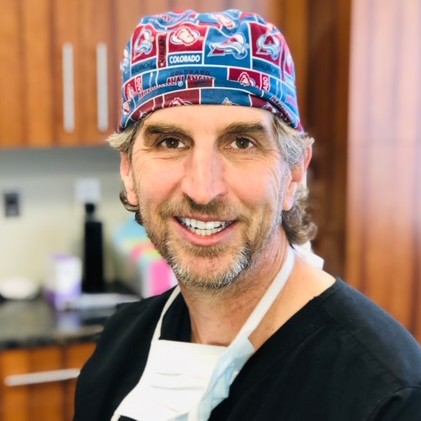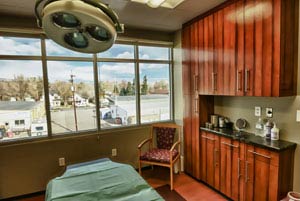Understanding the Popularity and Safety of Rhinoplasty
Rhinoplasty, commonly known as a nose job, is one of the most sought-after cosmetic surgeries worldwide. Beyond its cosmetic benefits of reshaping and refining the nose to create facial harmony, rhinoplasty often addresses functional issues like correcting a deviated septum or improving breathing difficulties. While the procedure has become more advanced and precise over the years, one of the most common concerns patients have is whether rhinoplasty is safe.
Though rhinoplasty is a routine procedure when performed by an experienced and board-certified surgeon, it’s essential for patients to understand the safety considerations, potential risks, and the importance of individualized treatment plans. In this article, we’ll explore the details of rhinoplasty safety, debunk myths surrounding the surgery, and offer insights into how patients can ensure the best outcomes from their procedure.
How Safe Is Rhinoplasty Surgery?
Rhinoplasty is considered a safe and well-established procedure when performed by a board-certified plastic surgeon with extensive experience. Over the years, advancements in surgical techniques and technology have significantly improved both the safety and outcomes of rhinoplasty. One of the key factors that contribute to the safety of the surgery is the surgeon’s ability to customize the procedure based on each patient’s unique anatomy, ensuring that both aesthetic and functional goals are achieved with minimal risk.
Rhinoplasty is typically performed under general anesthesia, which itself is very safe when administered by qualified professionals. Patients are closely monitored throughout the procedure to minimize any potential complications. Additionally, the open and closed techniques of rhinoplasty offer flexibility depending on the complexity of the case, further enhancing safety. Open rhinoplasty provides the surgeon with greater visibility of the nasal structures, allowing for more precision, while closed rhinoplasty, with no external incisions, reduces visible scarring.
Like any surgery, rhinoplasty does come with some potential risks, such as infection, bleeding, or anesthesia reactions. However, these risks are rare and can be further minimized through pre-surgical planning, meticulous surgical techniques, and post-operative care. Patients who follow their surgeon’s guidelines for recovery, such as avoiding strenuous activities and protecting the nose from trauma, contribute significantly to the overall safety and success of the surgery.
Risks of Rhinoplasty Surgery and How to Avoid Them
Like any surgical procedure, rhinoplasty carries certain risks. While these risks are rare, understanding and preparing for them can help minimize complications. By choosing a skilled and board-certified plastic surgeon and following proper pre- and post-operative care, most patients experience smooth recoveries and successful results. Below are some of the most common risks associated with rhinoplasty and steps to avoid them:
Potential Risks of Rhinoplasty:
- Infection: As with any surgery, there’s a small risk of infection post-procedure. Your surgeon will prescribe antibiotics to reduce this risk, and maintaining cleanliness of the incision sites is crucial.
- Bleeding: Minor bleeding is normal, but excessive bleeding can occur in rare cases. To minimize this risk, patients should avoid medications like aspirin or blood thinners before surgery, as these can increase the likelihood of bleeding.
- Asymmetry or Unsatisfactory Results: There is a possibility that the nose may heal unevenly or not match the patient’s expectations. This can be avoided by clear communication with your surgeon and opting for a conservative, realistic approach to the procedure.
- Breathing Difficulties: Some patients may experience difficulty breathing after surgery, particularly if too much cartilage is removed. This is preventable by working with an experienced surgeon who takes both aesthetics and functionality into account.
- Scarring: While scarring is rare, it can occur, particularly with open rhinoplasty. Choosing a surgeon skilled in scar management techniques can reduce the visibility of scars.
By following your surgeon’s pre-operative instructions and ensuring proper post-operative care, you can greatly minimize these risks and improve the likelihood of a successful rhinoplasty outcome.
Safe Nose Reshaping Procedures
Rhinoplasty offers different surgical techniques that can be customized based on the patient’s needs and the complexity of the desired changes. The two primary approaches are open rhinoplasty and closed rhinoplasty, both of which have been developed to ensure safety while delivering precise results.
In open rhinoplasty, the surgeon makes a small incision across the columella (the tissue between the nostrils) to lift the skin and provide full access to the nasal structures. This technique is often preferred for more complex cases, such as significant reshaping or structural correction, because it allows for greater precision. While open rhinoplasty leaves a small scar, it is generally well-hidden and fades over time.
Closed rhinoplasty, on the other hand, involves making incisions inside the nostrils, leaving no visible external scars. This technique is typically used for more straightforward procedures, such as minor reshaping of the nasal tip or bridge. Because closed rhinoplasty is less invasive, it often results in a shorter recovery time and reduced swelling.
Both techniques are safe when performed by an experienced, board-certified plastic surgeon. The choice of technique depends on the individual’s goals and anatomy, with a focus on achieving optimal aesthetic and functional outcomes while minimizing risk.
Rhinoplasty Safety and Recovery: What to Expect
The recovery process after rhinoplasty is a critical phase that directly impacts the overall safety and success of the surgery. Immediately following the procedure, patients can expect swelling, bruising, and mild discomfort, particularly around the eyes and nose. Most patients are given a nasal splint to protect the nose and support proper healing during the first week. Bruising and swelling typically subside within two to four weeks, but minor swelling may persist for a few months as the nose continues to heal.
During recovery, it’s essential to avoid activities that could disrupt the healing process, such as strenuous exercise, nose-blowing, or wearing glasses that put pressure on the nose. Most patients can return to light activities within a week and resume more strenuous activities after four to six weeks. Full results are generally visible after 6 to 12 months once all swelling has resolved.
Proper post-operative care, including following your surgeon’s instructions, taking prescribed medications, and attending follow-up appointments, is key to ensuring a safe recovery and optimal results.
Conclusion: Is Rhinoplasty Safe for You?
Rhinoplasty is a safe and effective procedure when performed by an experienced, board-certified plastic surgeon. Whether you’re looking to enhance the aesthetics of your nose or address functional issues like breathing difficulties, rhinoplasty can provide significant benefits. However, as with any surgery, the key to a safe and successful outcome lies in understanding the risks, setting realistic expectations, and following post-operative care instructions closely.
If you’re considering rhinoplasty, it’s important to discuss your goals, concerns, and health history with a qualified surgeon. At Boulder Valley Plastic Surgery, Dr. Jeffrey Swail and his team specialize in creating personalized treatment plans that prioritize both safety and stunning results. Contact us today to schedule a consultation, or call (303) 449-6666 to learn more about whether rhinoplasty is the right choice for you. We’re here to help you achieve your aesthetic and functional goals with confidence.





